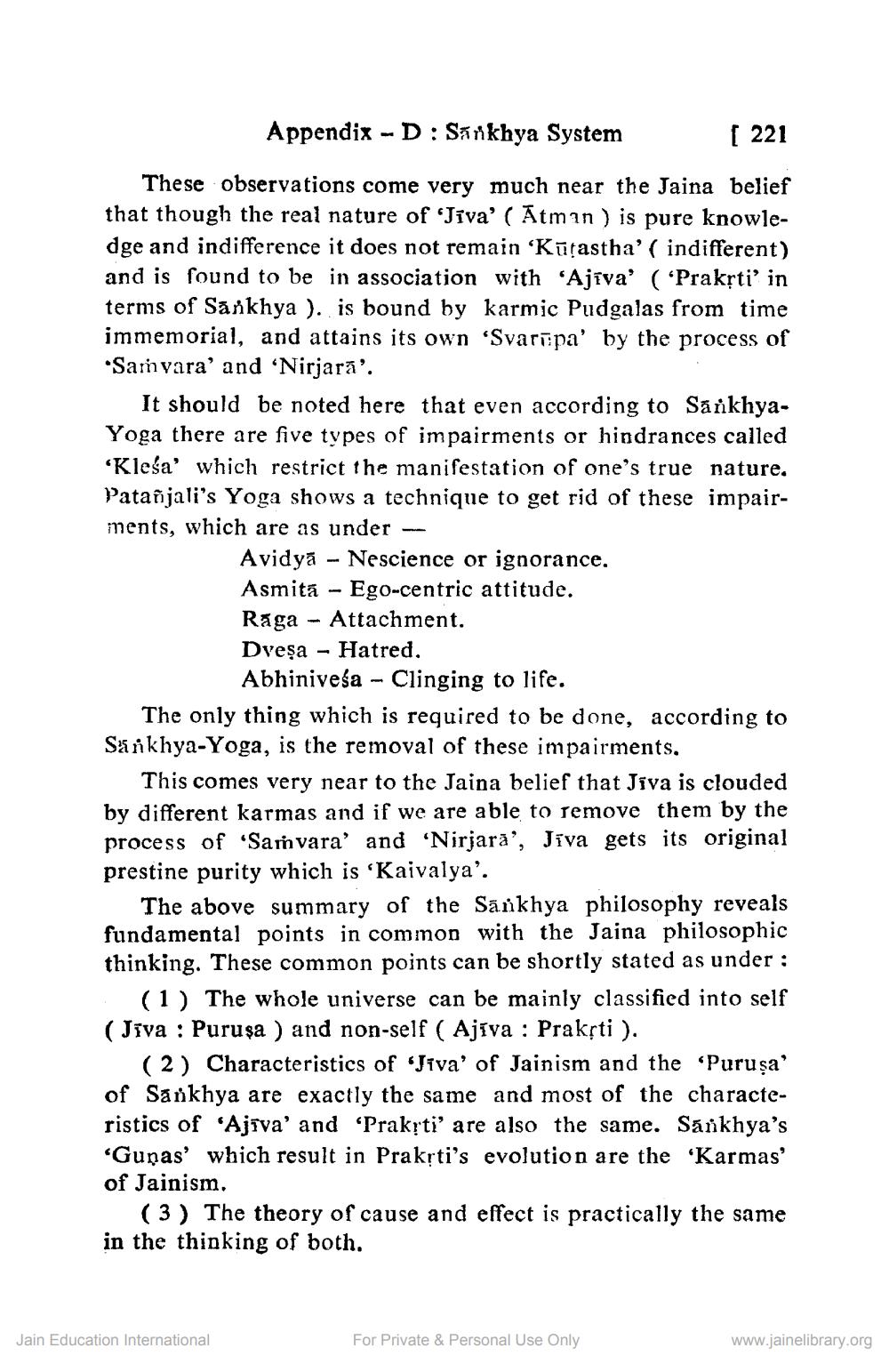________________
Appendix - D : Sankhya System
( 221
These observations come very much near the Jaina belief that though the real nature of 'Jiva'( Ātman ) is pure knowledge and indifference it does not remain ‘Kūļastha'( indifferent) and is found to be in association with 'Ajiva' ('Prakrti' in terms of Sarkhya ). is bound by karmic Pudgalas from time immemorial, and attains its own ‘Svarīpa' by the process of Samvara' and 'Nirjara'.
It should be noted here that even according to SaukhyaYoga there are five types of impairments or hindrances called 'Kleśa' which restrict the manifestation of one's true nature. Patañjali's Yoga shows a technique to get rid of these impairinents, which are as under --
Avidyā - Nescience or ignorance. Asmita - Ego-centric attitude. Raga - Attachment. Dveşa - Hatred.
Abhiniveśa - Clinging to life. The only thing which is required to be done, according to Sankhya-Yoga, is the removal of these impairments,
This comes very near to the Jaina belief that Jiva is clouded by different karmas and if we are able to remove them by the process of 'Sarvara' and 'Nirjara', Jiva gets its original prestine purity which is 'Kaivalya'.
The above summary of the Sankhya philosophy reveals fundamental points in common with the Jaina philosophic thinking. These common points can be shortly stated as under :
(1) The whole universe can be mainly classified into self ( Jiva : Puruşa ) and non-self ( Ajiva : Praksti ).
(2) Characteristics of 'Jiva' of Jainism and the "Puruşa' of Sankhya are exactly the same and most of the characteristics of 'Ajīva' and 'Praksti' are also the same. Sankhya's "Gunas' which result in Prakrti's evolution are the 'Karmas' of Jainism
(3) The theory of cause and effect is practically the same in the thinking of both.
Jain Education International
For Private & Personal Use Only
www.jainelibrary.org




